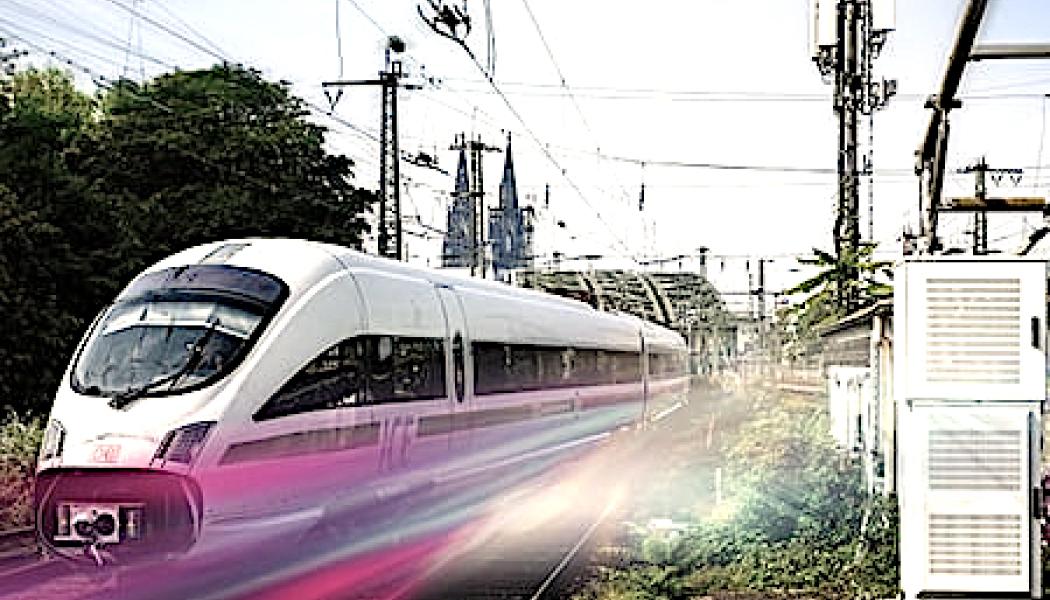After about two years of cooperation, Deutsche Bahn (DB) and Deutsche Telekom have a positive balance: the expansion of the seamless mobile network along the rails is proceeding faster than planned. Telekom already provides LTE with 200 Mbit/s connectivity and browsing on 97 percent of DB’s major traffic routes.
Telekom has built about 300 new cell phone poles and upgraded or expanded 700 existing cell phone sites to ensure uninterrupted cell phone coverage.
Srini Gopalan, Head of Germany at Deutsche Telekom:
– Telecom has set a good pace in expanding mobile communications along the rails: a new mobile communications site every two and a half days. Working with DB pays off. We are in action mode. Regardless of whether it is on the ICE or on the regional train – passengers should be able to make phone calls and surf the Internet on all routes without interruption in the Telekom mobile network.
Dr. Daniela Gerd Tom Marcotten, Member of the Board of Directors of DB Digitization and Technology:
– Many commuters use the time on the train today to work, make phone calls or watch movies online. To meet their demands, we are quickly closing the gaps in the mobile network with Telekom and will continue to expand bandwidth in the future. Because the better the phone and data connections, the more people will prefer to switch to the green train. The pace of expansion of mobile communications is a tailwind to diverting traffic.
As mobile communications expanded, Deutsche Telekom exceeded the Federal Network Agency’s specifications: the agency specifies a data rate of 100 Mbit/s on all major traffic routes and 50 Mbit/s for secondary routes. Telekom has already met these requirements.
In June 2021, DB and Telekom agreed to provide the entire DB network with high-performance mobile communications by the end of 2026 and started investments of hundreds of millions. The expansion should be completed along approximately 7,800 km of main lines – the routes on which ICE and ICE mainline trains operate – by the end of 2024, along 13,800 km of heavy commuter routes traveled by more than 2,000 commuters per day, by 2024 on The latest is at the end of 2025.
Almost completely available
The goal of the cooperation agreement is now within reach, even on lines with a large number of passengers – and therefore well ahead of schedule: Telekom’s LTE network with 200 Mbit / s is already available on more than 90 percent of these lines.
For the approximately 12,000 kilometers of DB routes outside of major traffic and routes with large passenger volumes, DB and Telekom have agreed to cover LTE with a data rate of up to 100 Mbit/s by the end of 2026. More than 95 percent of this has been achieved. Already this goal, transfer speeds of 100 Mbit / s are available to Telekom customers over almost the entire database path, and dead spots are fixed faster than planned.
New long-distance DB trains, such as the ICE 3neo or ICE L, are equipped with special windows that improve mobile reception through stronger filtering. In the case of local trains, the decision to equip the windows with similar panes or to modify them – for example by post-treatment of the glass using laser technology – is taken on site with the traffic authorities.
optical fiber lines
DB also provides infrastructure such as land and connections to optical fiber lines or roofs on buildings and mobile masts to expand mobile communications. DB has signed hundreds of contracts with Deutsche Telekom in recent years. In addition, more than 100 railway tunnels have already been prepared to receive mobile phones in cooperation with Deutsche Telekom. The tunnel tubes can only be partially supplied via cellphone towers, which radiate radio signals into the tunnel. In long tunnels – especially curved ones – additional antennas must be installed. This is time consuming because the tunnels must be closed to train traffic for safety reasons.
Smooth mobile coverage
In the coming months, the focus of the collaboration will be on the remaining, and especially required, sections of the road—places where stringent nature conservation or monument protection requirements must be met, where there is little room for radio poles or where steep slopes or embankments make construction difficult. Here too, Deutsche Bahn and Telekom want to develop solutions together as part of their proven collaboration to provide seamless mobile coverage to their customers.
Deutsche Bahn press release

“Lifelong food practitioner. Zombie geek. Explorer. Reader. Subtly charming gamer. Entrepreneur. Devoted analyst.”







More Stories
Susan Boyle’s new album “The Gift” goes directly as an album in the United States and the United Kingdom
One direction with Swedish single -written
Abi Harmoni launches tickets for two exclusive parties in a competition in Stockholm!